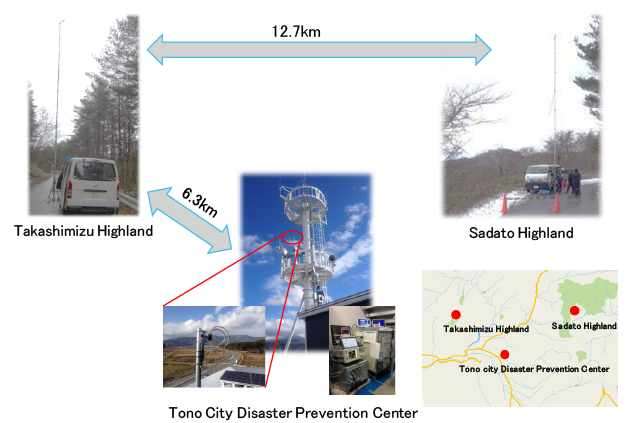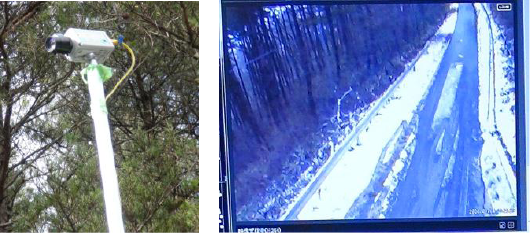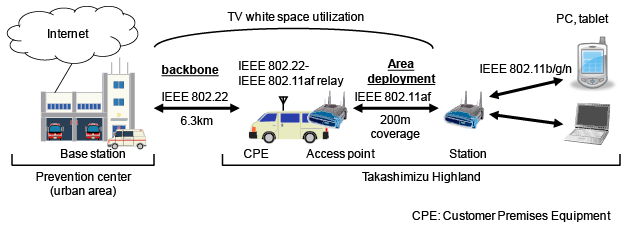Home > Press Release > World’s First Breakthrough Achieved for Long-Range Broadband Communications in TV White Space
The National Institute of Information and Communications Technology (NICT, President: Dr. Masao Sakauchi) and Hitachi Kokusai Electric Inc. (Hitachi Kokusai, President and Chief Executive Officer: Manabu Shinomoto) recently succeeded in the world’s first field trial where long-range broadband communications in the TV white space was confirmed by using IEEE 802.22-based and IEEE 802.11af-based systems. In this trial, NICT and Hitachi Kokusai observed successful downstream and upstream data transmission at 12.7 km distance between IEEE 802.22-based base station and customer premises equipment, at a speed of 5.2 Mbps and 4.5Mbps, respectively. In addition, NICT and Hitachi Kokusai constructed a multihop network by using IEEE 802.22 as a backbone link and IEEE 802.11af, which is connected to it, to expand its connection area. In this trial, they demonstrated some applications such as video monitoring of roads and cliffs and video telephone in mountain areas where there are no wired/wireless Internet connections available. These achievements showed feasibility of providing broadband services in rural areas and supporting radio communications during disasters relief activities.
Further information about the trial that will be presented at the Super Wi-Fi Summit in Miami, Florida, from January 29 to 31, 2014.
IEEE 802.22 working group: http://www.ieee802.org/22/
IEEE 802.11af task group: http://www.ieee802.org/11/Reports/tgaf_update.htm
[1] Press Release (October 17, 2012)
“World’s First TV White Space WiFi Prototype Based on IEEE 802.11af Draft Standard Developed”
https://www.nict.go.jp/en/press/2012/10/17-1.html
[2] Press Release(January 30, 2013)
“World’s First TV White Space Prototype Based on IEEE 802.22 for Wireless Regional Area Network”
https://www.nict.go.jp/en/press/2013/01/30-1.html
http://www.hitachi-kokusai.co.jp/global/news/news130130.html
Technical Contact
Hiroshi Harada and Kentaro Ishizu
Smart Wireless Laboratory
Wireless Network Research Institute
National Institute of Information and Communications Technology
Tel: +81-46-847-5076
E-mail: 


































Masahiro Asano
Engineering Development Department
Business Planning Center
Video & Communication Systems Division
Hitachi Kokusai Electric Inc.
E-mail: 
























Media Contact
Sachiko Hirota
Public Relations Department
National Institute of Information and Communications Technology
Tel: +81-42-327-6923
E-mail: 



















Kazuya Sasaki, Sayori Nishino
Corporate Communication & External Affairs Office
Strategic Planning & Communication Center
Strategic Planning Management Division
Hitachi Kokusai Electric Inc.
Tel: +81-3-6734-9401
E-mail: 






































